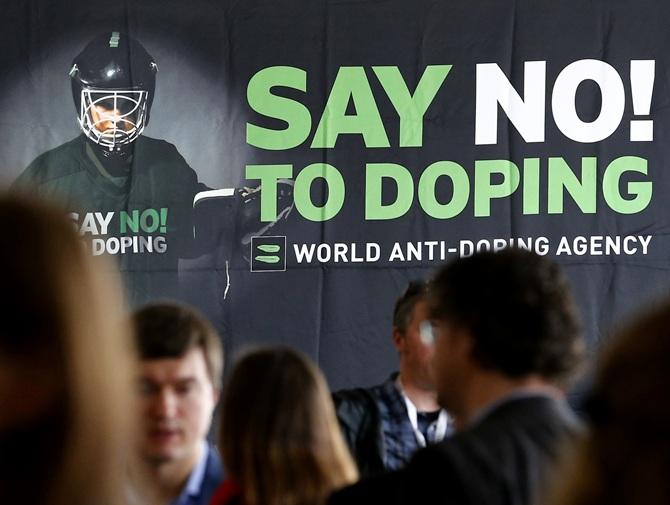UNDERSTANDING DOPING IN 2022
Doping is the use of
certain medications to enhance performance and endurance. Doping is the
improper use of specific drugs and techniques to increase athletic ability and
endurance since the body can carry more oxygen to the muscles while using such
drugs. Doping is thought to be morally and ethically reprehensible. It is a
worldwide issue. Consuming such substances has many negative side effects
because they directly affect one's health, causing illnesses like infections,
allergies, heart conditions, stroke, pulmonary embolism, high blood pressure,
acne, impotence in men, and changes in women's menstrual cycles.Doping
control is an essential part of anti-doping programmes to promote and protect
the integrity of sports and the health of athletes.
World
Anti-Doping Agency
The World Anti-Doping Agency is a foundation
initiated by the International Olympic
Committee based in Canada to promote, coordinate and
monitor the fight against doping in
sports.
The functions of WADA are research, education,
development of anti-doping techniques and
to monitor the anti-doping code.
Council of Europe anti-doping convention and US
anti-doping agencies aims are closely
related to that of WADA
List
of Prohibited Substances by WADA (2021)
1. Peptide Hormones, Growth factors, related
substances and mimetics.
2. Beta-2 Agonists.
3. Hormone and Metabolic Modulators.
4. Diuretics and Masking agents Stimulants.
6. Glucocorticoids.
Anti-Doping Policies of Wada
• Adequate doping testing.
• Wada release a list of prohibited substances every
year.
• Follow-up testing to be done to not spare any
sportsperson of doping.
• Testing at night was also introduced to stop
doping.
The International Convention against doping in
sports is a multilateral UNESCO treaty by
which states agree to adopt national measures to
prevent and eliminate drug doping in sports.
The convention was adopted at the general conference
of UNESCO in Paris on 19th October
2005.
Kinds
Of Testing
There are two types of tests that are conducted for
doping24
• Urine testing
• Blood testing
Responsibility
Of Athlete
An athlete can be called for dope testing at any
anytime and they are responsible that no
violation of policies that are formed by WADA by
their side take place.
1. Be aware and comply with all anti-doping policies
2. To be present for sample collection when called
for.
3. Responsibility to be taken for use of any banned
substance or method.
4. Inform medical personnel about any treatment or
medicine that is prohibited and can
amount to doping.
5. To report immediately to doping control station
for testing unless relayed for valid reason.
6. To maintain control of the sample until it’s
sealed.
Anti-Doping
Rules Violation
Major anti-doping rule violations which apply to
players team management and officials.
1. Presence of banned substance in an athlete’s
sample.
2. Use or attempted use by an athlete a prohibited
substance or a prohibited method.
3. Refusing or failing to do a drug test after
notification for committing doping.
4. Where about failures.
Most athletes are aware of how these
performance-enhancing medications can affect their health and, if they use
them, how being caught will impact their careers. So why do athletes use these
drugs? As there comes a period in a sportsperson's career when their performance
is not improving in spite of all training, so they use these illegal substances
to enhance their performance. Coaches also suggest such substances to athletes
at that time. When a sportsperson is not prepared for a competition, they dope
before some months to pass the test later. When sportspersons do not have
access to certain facilities, they use such substances. Sometimes they do not
use such substances directly but rather in other forms.
The COVID-19 crisis brought everything to a
standstill, but the authorities were worried that since everything was shut
down, athletes would maintain themselves naturally and wouldn't use illegal
substances to do so. As a result, the authorities were worried that athletes
would use the pandemic as an excuse to break the law because doping testing was
not possible during the pandemic. WADA stated that they will check the COVID-19
vaccine before that it does not have any substances that violate the rules of
WADA and then only the athletes will be allowed to take the vaccine.
Due to the high number of doping cases in India, the
country's anti-doping authorities have also urged its athletes to watch what
they eat and refrain from using products that are prohibited because doing so
might result in a country-wide sports suspension. Despite the fact that it is
well known that caffeine boosts endurance, it became allowed in 2004. While
using an altitude tent to raise the amount of blood in your blood was
acceptable, injecting the hormone that has the same effect was not. More doping
methods are allowed because they are accepted as natural, Some believe that
physiological doping should be permitted, with red blood cell count and hormone
levels restricted and checked for accuracy.
Athletes who use drugs recklessly might harm their health
in the long run, therefore doctors and professionals can assist them use drugs
in moderation. Since the doping issue won't go away, compromise should be
sought rather than an end to it.
Why shouldn't doping be permitted in sports? Some
think it should be permitted since it will speed up injury healing, while
others think doping is unethical and should be prohibited.
Some people think that doping should not be
permitted because if it is, then competitions between doping athletes and
anti-doping athletes will take advantage of the pandemic and utilise illegal
substances, according to WADA.
Written by
Nupur Verma


.jpeg)
Comments
Post a Comment